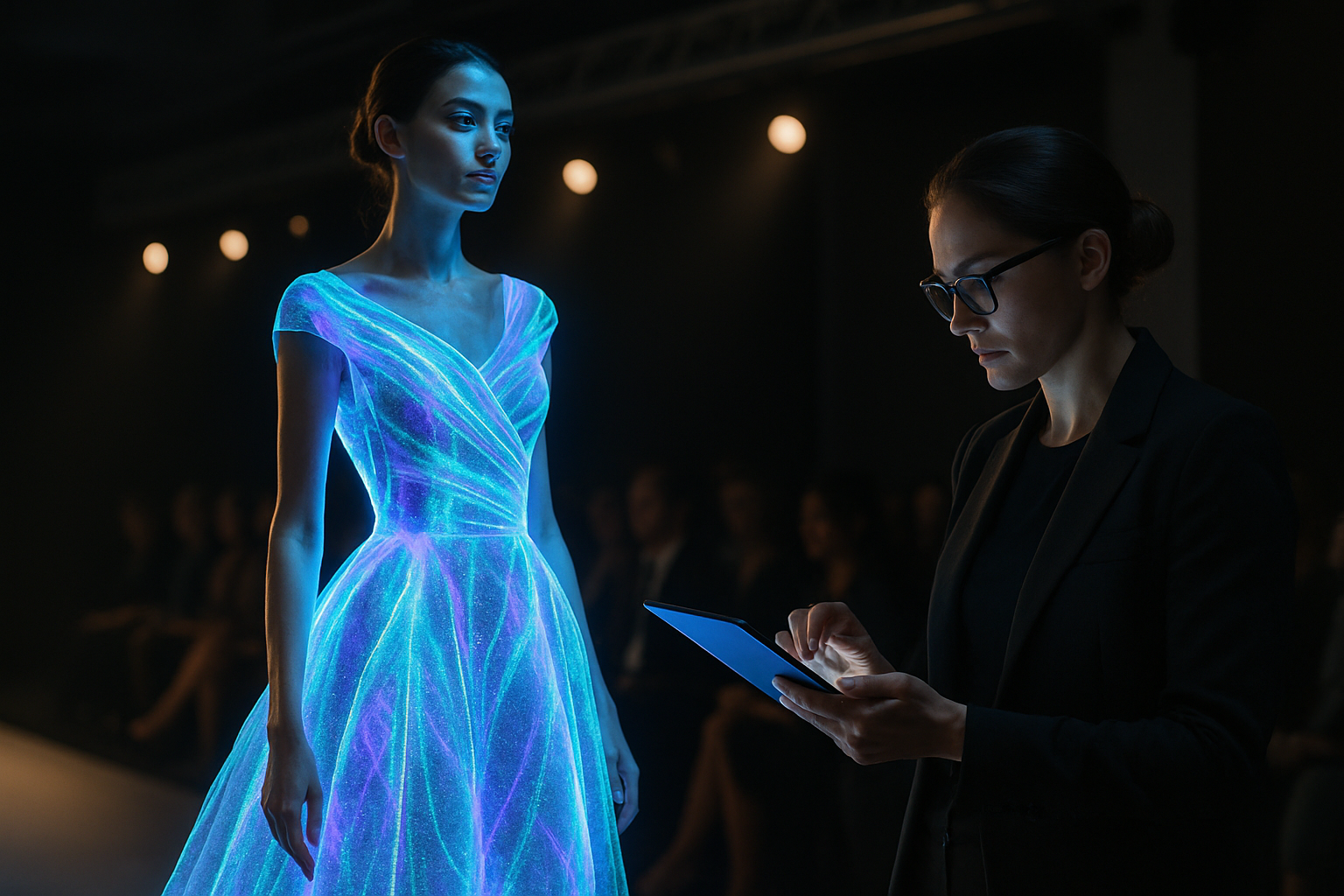Holographic Haute Couture: Fashion's Digital Frontier
The intersection of high fashion and cutting-edge technology heralds a new era in the world of haute couture. Holographic garments, once relegated to the realm of science fiction, are now strutting down runways and captivating audiences worldwide. This revolutionary fusion of fashion and holography is redefining the boundaries of sartorial expression, challenging traditional notions of materiality, and opening up unprecedented possibilities for designers and wearers alike. As the fashion industry embraces this digital frontier, we explore the transformative potential of holographic haute couture and its implications for the future of style.

Technological Breakthroughs
The realization of holographic haute couture required significant technological leaps. Advances in nano-scale light-emitting diodes (LEDs) and flexible display technologies paved the way for integrating holographic elements into fabric. Researchers developed ultra-thin, pliable holographic films that could be seamlessly incorporated into garments without compromising comfort or flexibility. Simultaneously, improvements in battery technology and wireless power transmission addressed the challenge of powering these digital designs, allowing for truly wearable holographic creations.
Pioneering Designers and Collections
Forward-thinking fashion houses and independent designers have been quick to embrace the potential of holographic couture. Renowned labels like Iris van Herpen and Hussein Chalayan have incorporated holographic elements into their avant-garde collections, pushing the boundaries of what’s possible in fashion design. These trailblazers have created garments that shift and transform in real-time, responding to the wearer’s movements or environmental stimuli. Their work has not only garnered critical acclaim but has also inspired a new generation of designers to explore the intersection of technology and fashion.
The Aesthetic Revolution
Holographic haute couture represents a paradigm shift in fashion aesthetics. Traditional constraints of color, texture, and form are transcended as designers harness the power of light and digital manipulation. Garments can now display moving images, change patterns instantaneously, or even become transparent at will. This dynamic quality introduces an element of performance to fashion, blurring the lines between clothing and art installation. The ability to program and customize holographic elements also opens up new avenues for personal expression, allowing wearers to adapt their appearance to different contexts or moods with unprecedented ease.
Challenges and Controversies
Despite its transformative potential, holographic haute couture faces several challenges. The high cost of production and the technical expertise required to create these garments currently limit their accessibility to a select few. Environmental concerns have also been raised regarding the energy consumption and potential electronic waste associated with digital fashion. Additionally, some critics argue that the focus on technological spectacle may overshadow the craftsmanship and artistry traditionally associated with haute couture. The fashion industry must grapple with these issues as it navigates the integration of holographic technology into mainstream design.
Cultural Impact and Future Prospects
The emergence of holographic fashion is already having a profound impact on popular culture and the broader fashion ecosystem. Music artists and performers are incorporating holographic elements into their stage costumes, creating mesmerizing visual spectacles. The technology is also finding applications in the world of virtual and augmented reality, where digital fashion is becoming increasingly relevant. As the lines between physical and digital realities continue to blur, holographic haute couture may well become a bridge between these worlds, reshaping our understanding of clothing and self-expression.
Looking ahead, the potential applications of holographic technology in fashion seem boundless. From adaptive camouflage to mood-responsive designs, the future of clothing promises to be more interactive and personalized than ever before. As the technology becomes more accessible, we may see a democratization of fashion design, with individuals able to create and project their own holographic garments. The integration of artificial intelligence could lead to smart clothing that adapts to the wearer’s physiological state or environmental conditions, further blurring the line between fashion and wearable technology.
In conclusion, holographic haute couture represents a bold leap into the future of fashion. By embracing the digital frontier, designers are not only pushing the boundaries of creativity but also challenging our fundamental conceptions of clothing and identity. As this technology continues to evolve, it promises to revolutionize not just high fashion, but the entire spectrum of personal style and self-expression. The runway of the future may well be a canvas of light, where imagination is the only limit to what we wear.





